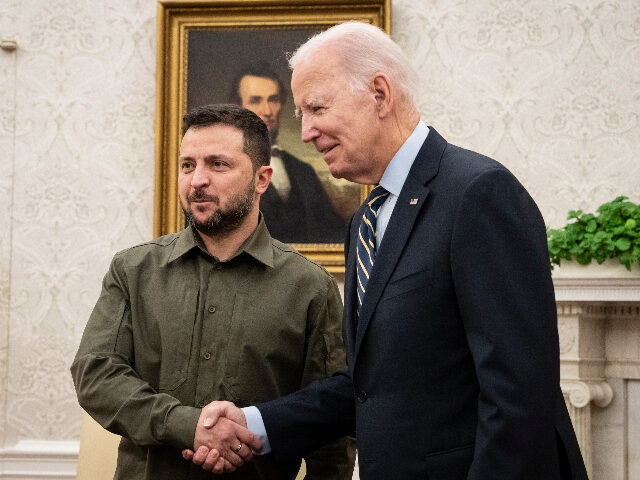Orders for durable goods made in the U.S. unexpectedly surged in August—but the increase is mostly from higher spending on military hardware as the U.S. government restores its armory depleted by support for Ukraine.
Durable goods orders jumped 0.2 percent in August, the Commerce Department said Wednesday. Economists had been expecting around a 0.5 percent decline.
Defense capital goods orders surged 18.6 percent compared with the prior month to $14.8 billion. Year-to-date, defense capital goods orders are up 15.6 percent to $106.9 billion.
Defense capital goods include small arms and ordnance, communications equipment, aircraft, missiles, space vehicles and parts, ships and boats, and search and navigation equipment.
Orders for defense aircraft jumped 19.2 percent to $5.8 billion. Year-to-date these are up 13 percent to $41.6 billion.
A figure that omits defense and transportation orders, called core capital goods, rose 0.9 percent. This is considered a proxy for business investment. Compared with last year, these are up two percent. The producer price index for private capital goods, however, is up 3.8 percent, which suggests that orders are down after inflation adjustment.
Orders for motor vehicles rose 0.3 percent for the month. Orders minus transportation rose 0.4 percent.
Durable goods orders tend to rise in a growing economy and decline in a contracting economy. When significant economic growth is driven by funding for military equipment, this is often referred to as “war Keynesianism” or “military Keynesianism.” John Maynard Keynes was a British economist who argued that declines in aggregate demand were the primary causes of recessions. He advocated using deficit spending to smooth out economic cycles and support employment during downturns.
Ironically, “military Keynesianism” has been deployed to dismiss Russia’s surprisingly strong economic performance this year.
As Breitbart Business Digest noted the other day, the Wall Street Journal reported in August:
Economists attribute much of the growth in Russian industrial production this year to weapons and materiel. President Vladimir Putin has ordered the government to provide unlimited funding for the war machine.
The output of “finished metal goods”—a line that analysts say includes weapons and ammunition—rose by 30% in the first half of the year compared with last. Other lines associated with military output have also increased: Production of computers, electronic and optical products also rose by 30%, while the output of special clothing has jumped by 76%. By contrast, auto output is down over 10% year-over-year.
“What we’re seeing now is a massive boost in demand distribution via military-industrial complex and war beneficiaries, we can call it military Keynesianism,” said Alexandra Prokopenko, a former Russian central-bank official who is now a nonresident scholar at the Berlin-based Carnegie Russia Eurasia Center.
Breitbart Business Digest pointed out:
Before anyone scoffs at the sustainability of this “military Keynesianism,” keep in mind that new orders for “defense capital goods” in the U.S. are up 20 percent year-to-date, hitting nearly $94.8 billion in July, according to the U.S. Department of Commerce. New orders for defense aircraft are up by 17.3 percent to $36.2 billion. So, Putin’s Russia is not alone in getting an economic boost from war production.
Democrats on Capitol Hill, who have traditionally been critical of expanded military spending, are united in support of President Joe Biden’s Ukraine policies, including vast expenditures for military aid and enlarged military spending

COMMENTS
Please let us know if you're having issues with commenting.